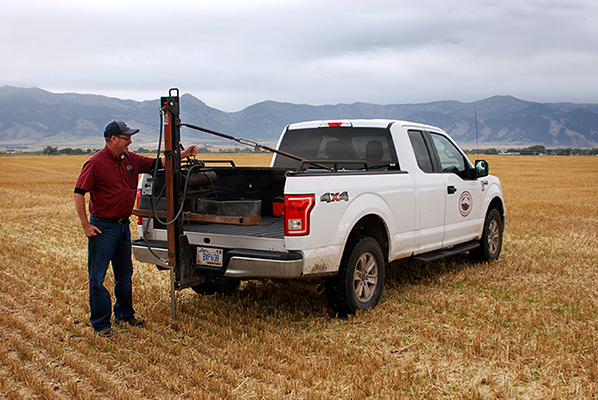< Return to News
Soil Sampling
Why soil sample? Success.
A soil sample can help you in a lot of ways.
1. Give a starting point for fertilizer recommendations.
2. Track your soils and how they are impacted by applications and crop rotations.
3. It often saves money on over applying fertilizers.
4. Defines issues such as low pH or micronutrient deficiencies.
Where can I have sample done for me? Rocky Mountain Supply.

Rocky Mountain Supply can take soil samples in multiple ways.
• Truck Probe
• Bumper Probe
• Foot Probe
• Drilled Sample
RMS will collect the samples or you can collect them yourself. We will send them off to our lab for analysis, and one of our agronomists will review the data and make a recommendation for you based off the findings.
How to take a sample by hand
An accurate soil sample is composed of multiple, smaller samples called cores. Individual cores include soil from the surface down to the depth at which grasses, or plants will draw most nutrients, typically 6 inches. Each final sample for an area should combine at least 10 soil cores from random spots throughout the area. Avoid taking cores from areas with bare spots or lawn moss as part of a general sample. Pro or areas where you plan to grow specialty plants, such as blueberries, warrant separate final samples of their own.
We have hand probes you can borrow and bags that to collect soil samples. We then send the soil to our lab for analysis.
Keeping the soil PH levels in check
Low soil pH is becoming a problem in Montana that we haven’t had before. It can be caused by soil type usually in fields up against the mountain but that is an isolated problem. In most fields, low soil PH is caused by the over use of nitrogen. No till practices may be adding to that issue by concentrating nitrogen in the upper 3 inches. The pH is being effected by the salt concentration in the fertilizer. What you will see in the field in areas effected will be plants that look yellow and wilted, stunted crops are a symptom as well. There are a number of ways to deal with this issue. A soil test will help you decide how bad the issue is. Deep tillage may help if the soil test shows higher pH soil below 3 inches. An application of lime also helps to raise pH.